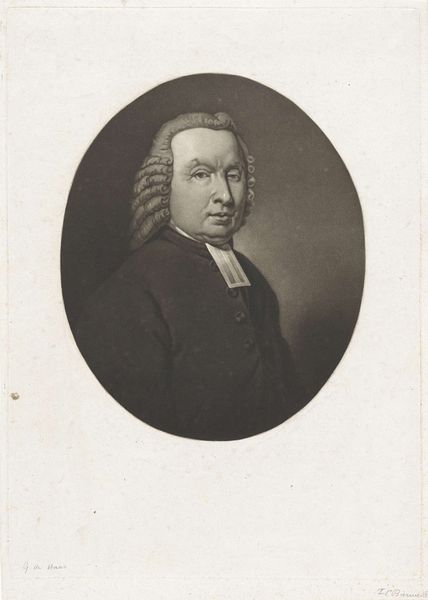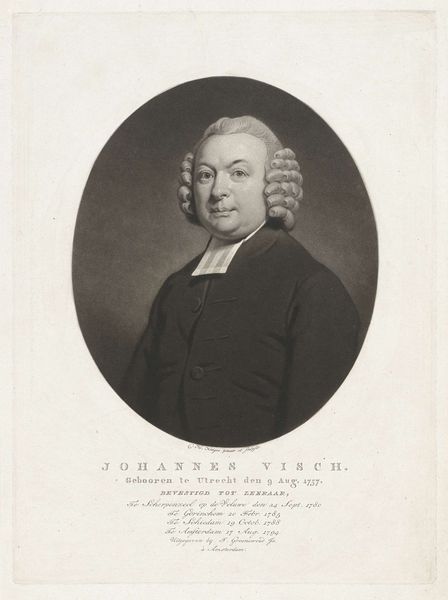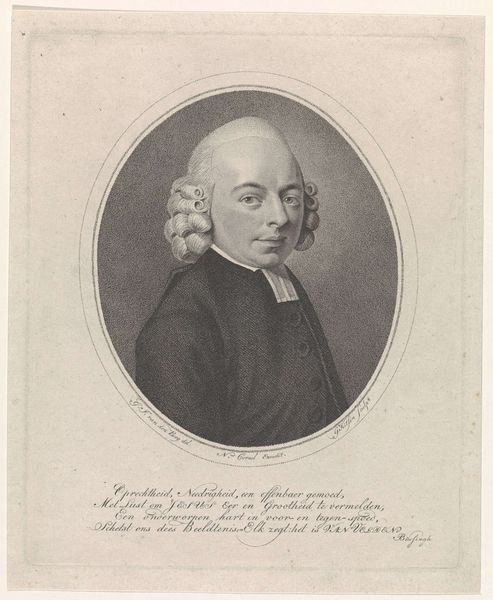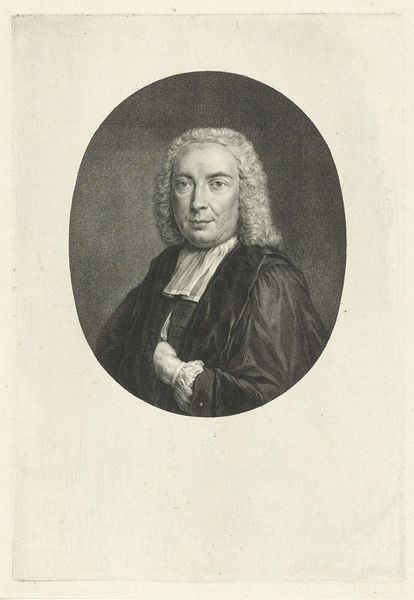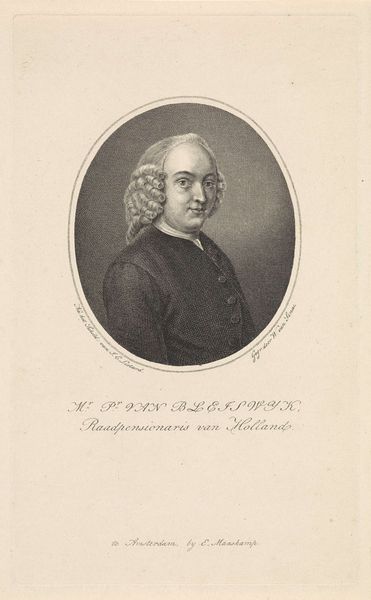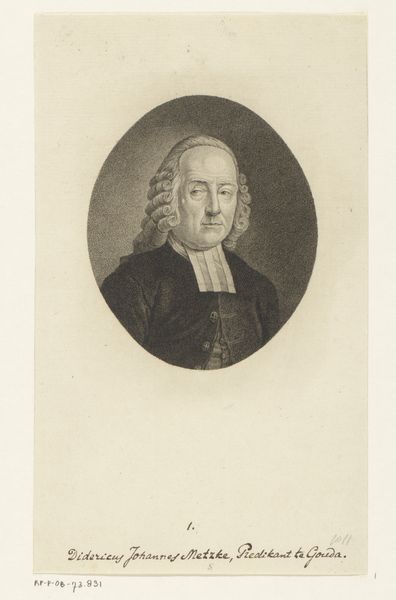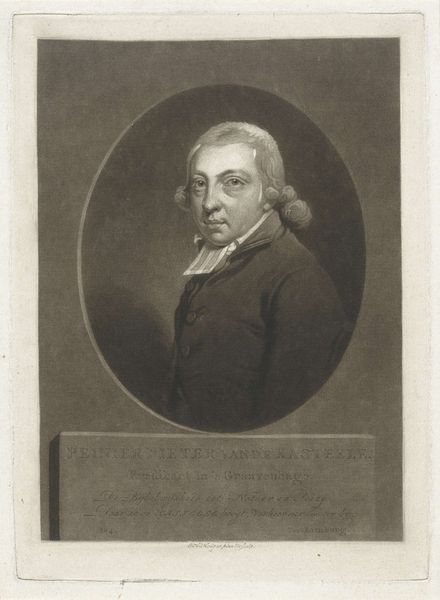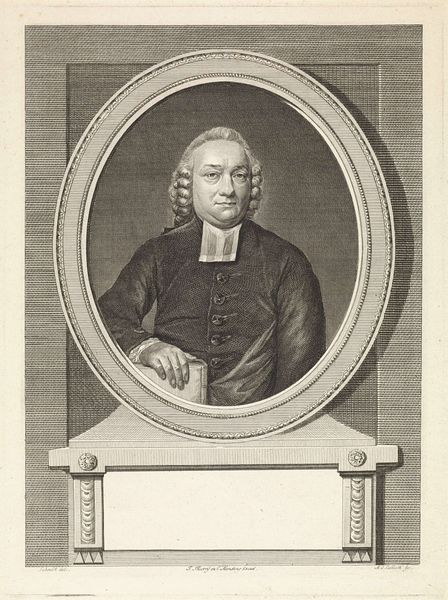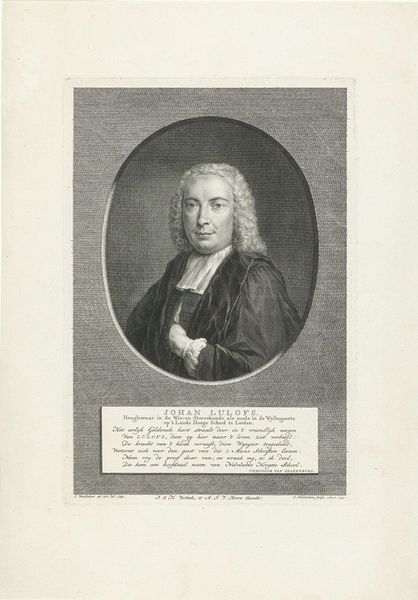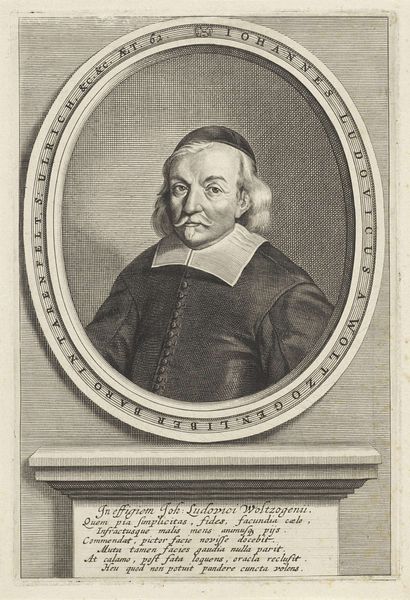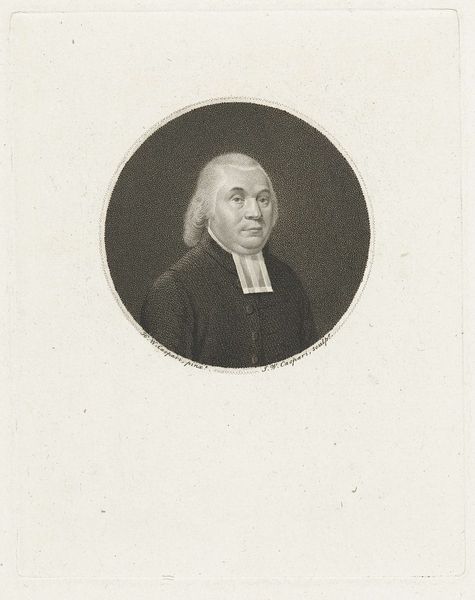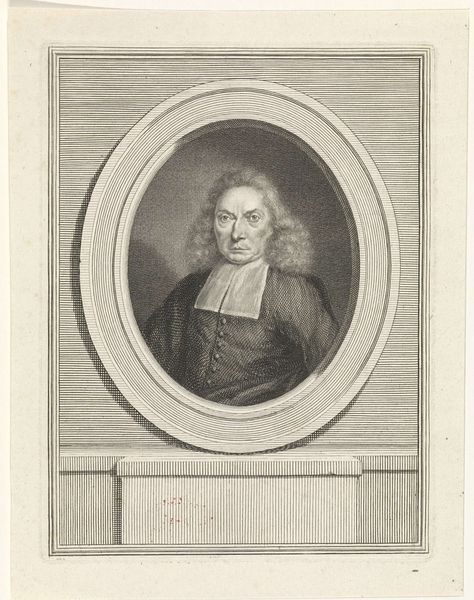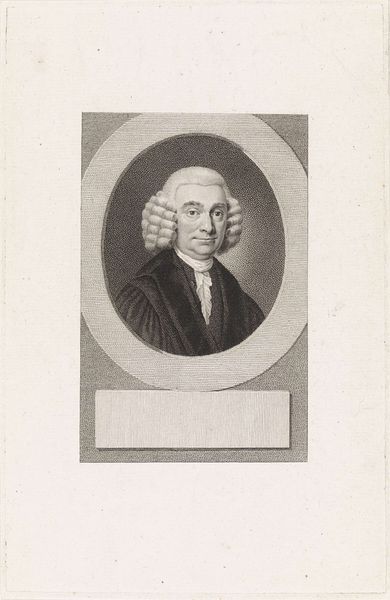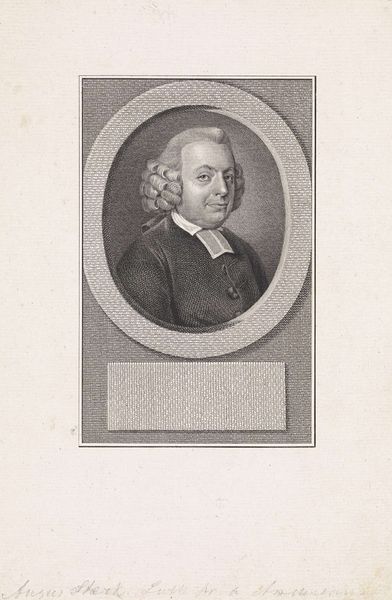
drawing, pen
#
portrait
#
drawing
#
neoclacissism
#
historical photography
#
pen
#
history-painting
Dimensions: height 377 mm, width 276 mm
Copyright: Rijks Museum: Open Domain
Editor: This is the “Portrait of the Preacher Hendrik Husly Viervant” made in 1804 by Charles Howard Hodges using pen. There’s a sense of quiet authority to the piece. What social structures do you think influenced how the sitter is presented? Curator: A crucial question! In this Neoclassical portrait, we see more than just an individual. Consider the sitter’s attire, for instance. His clothing and wig reflect the social expectations for religious figures in the 18th century, signaling respectability and adherence to a particular societal role. How do these visual cues affect our reading of his power, or lack thereof, within the community? Editor: It makes him appear as though he is a figure that you would trust. Were there social movements at this time that would react to a work like this? Curator: Absolutely. As the Enlightenment's ideals spread, questions arose regarding the Church's authority and social hierarchy. This image would be viewed through the lens of ongoing debates around religious tolerance and individual freedoms. What might an emerging middle class, eager to challenge traditional power structures, make of such a portrait? Editor: They may see it as upholding an outdated establishment? The Church? Curator: Precisely. Or, conversely, find comfort in the familiarity of established norms. The beauty of art lies in its capacity to reflect and refract diverse perspectives across time. So, how has engaging with this piece altered your perception of portraiture and its role in representing the complexities of power? Editor: It highlighted how clothing and symbols can say a lot about someone's position in society at a given moment. Thank you. Curator: And thank you for reminding us to always question the seemingly straightforward images we see and understand their complex intersectional backgrounds.
Comments
No comments
Be the first to comment and join the conversation on the ultimate creative platform.
